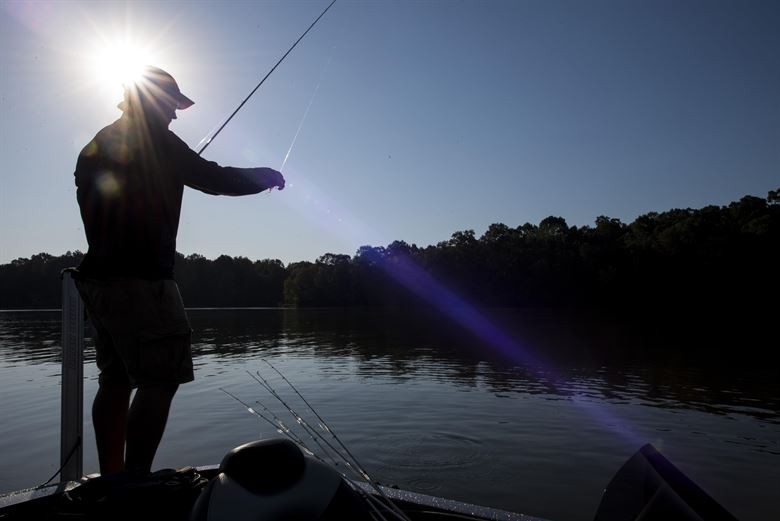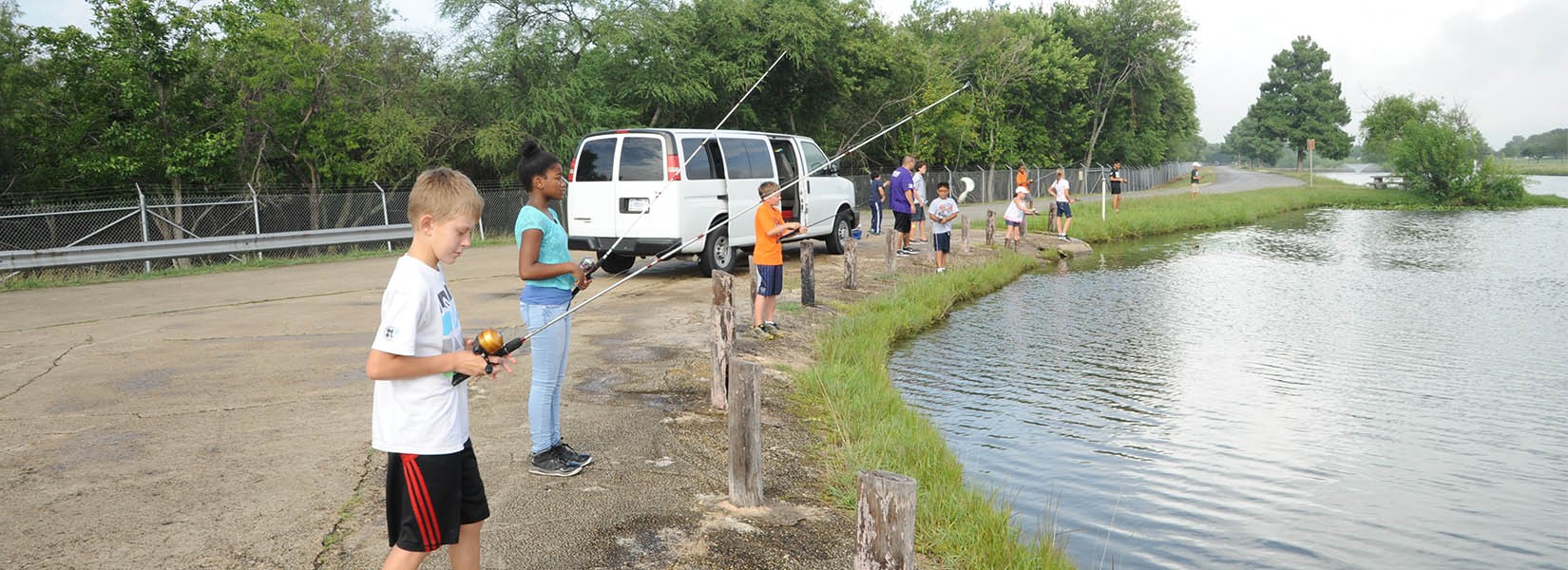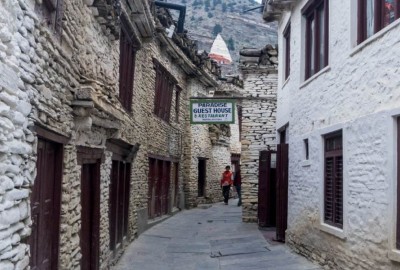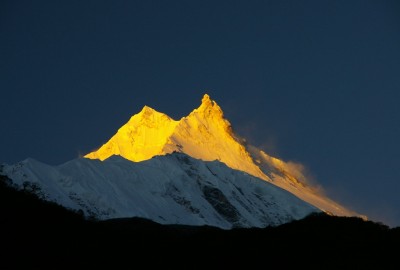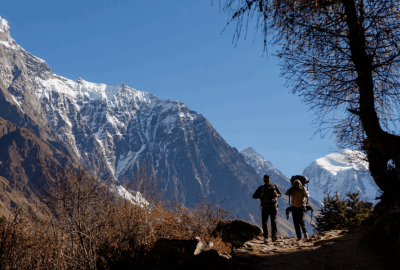Fishing in Nepal is done throughout the twelve months. However, most of the anglers pick the post-monsoon and pre-monsoon period for fishing in Nepal. That is anytime between February to April and October to November is the best time for angling in Nepal. Fishing adventure is gaining popularity among the international anglers and as well as locals. There are some popular fishing spots in Nepal which provide excellent fishing experience.
The list of best fishing places is very long which enlists many freshwater rivers and pristine lakes. Here, we will be listing the 7 best places for fishing in Nepal:
Trishuli River
Trishuli river is the center of adventures like kayaking, rafting, and fishing. To reach the banks of the Trishuli river, it is a 2 to 3 hours drive from Kathmandu. It is one of the most sought rivers for angling in Nepal. This river starts from Tibet and confluence with Betrawati and finally to Narayani.
Trishuli River is the perfect destination for obtaining the unique fishing outing. The cold, crystal-clear, and fast-flowing water of Trishuli is home to many fishes. Among them, the Golden Mahseer, Trout, Catfish, and River Eel are the most seen fishes in the Trishuli river. To catch these fishes is a fist-fight and exciting experience. The angling in the Trishuli river is not only adventurous but also scenic. The surroundings of the river are dotted with green and enriched vegetation. Some part of the Trishuli river also provides the view of Langtang region. Overall, the Trishuli river is a closest and worthy pick for fishing.
Karnali River
Karnali river is a heaven for fishing in Nepal. It is the longest river in Nepal situated west of Kathmandu. Why is it heaven? Well, the water of the Karnali river is home to a large number of fish species. The varieties of fish found here make this river the primary destination for fishing. Golden Mahseer, Silver Mahseer, Bokar, Sahar, Catfish, Asla are the main fish attractions of this river. It is also home to rare Ganges River Dolphin also which can luckily be seen.
Jungle Ghat, Thulighat, Rato Bhale Gaun, Scorpion beach, and Kohelpur are the popular fishing spots of the Karnali river. With a number of fishing spots and fish species, it is sure that the Karnali river is the best place for fishing in Nepal. Karnali river does not only provide good fishing experience but natural exploration also. The corners of the rivers are flushed with green forest. And some parts of the river are also connected with Bardia National Park. Hence, Karnali is the must-visit place for anglers who love fishing beside nature.
Babai River
Babai River is also one of the best places for fishing in Nepal. This river is home to more than fifty fish species and flows through Bardiya National Park. Golden Mahseer, Bullseye Snakehead, Goonch, Indian Trout Barb, and Raimas Bola are the main fish species found here in this river. It lies inside the protected site, so it requires permits to enter and to fish in the Babai River. The national park's official will also accompany you.
The fish catching rate is very high in the Babai River. Most catchable fish of the Babai river is the Golden Mahseer weighing around 3 to 4 kg. Along with the fishing, you will get to see some wild animals like Elephants, Rhinos, Deers, Sloth bears, Antelopes, Tigers around the area of Babai river. To say it all, Babai river fishing is a multifaceted adventure that includes fishing and wildlife adventure in one deal.
Pokhara Lakes
Pokhara is a city of lakes and a hub of tourists. There are several recreational activities to do while in Pokhara, fishing is one of them. The two beautiful lakes of Pokhara, i.e. Fewa and Begnas lake are the perfect fishing spots in Pokhara. With mountain ranges at the backdrop, the Pokhara lakes are probably the best place for anglers. Along with the view, they can have fun catching fish.
These lakes are home to fish species like Mahaseer, Grass Carp, Common Crap, Catfish. The fishing environment is so peaceful and serene around these lakes. The magnificent eye shots of Dhaulagiri and Annapurna ranges makes this fishing an exotic experience. We are sure that fishing in Pokhara lakes is the best one-day fishing excursion in Nepal.
Sunkoshi River
Sunkoshi river, which means “River of Gold,” is one of the popular destinations for rafting and fishing in Nepal. Sunkoshi river is situated east of Kathmandu within 2 to 3 hours drive. The fast-flowing and white water of the Sunkoshi river provide the ultimate fishing experience. The major inhabiting fishes of this river are Golden Mahseer, Common Mahseer, Freshwater Eel, Snow Trout, and Catfish.
Sunkoshi river is most famous due to its white water rafting adventure. Many people during post and pre-monsoon come to this place for rafting and fishing. Dolalghat is the primary fishing spot of the Sunkoshi river along with Lubhughat, and Seleghat. Tribeni, the confluence of three rivers, i.e. Arun, Tamor, and Sunkoshi, is a famous fishing spot to catch a variety of fishes. Overall, the Sunkoshi river is the best white-water fishing spot in Nepal.
Ankhu Khola (Netrawati)
Ankhu Khola is another great destination for anglers in Nepal. This popular fishing river lies north from Kathmandu towards the Ganesh Himal region. And it takes around 6 hours drive to reach the fishing spot of Ankhu Khola from Kathmandu. It is popular for hooking fish species like Golden Mahseer, Catfish, Snow Trout, Carp.
The main angling spots of Ankhu Khola are Khahare Bazaar, Kintang Phedi, Tari Besi. Fishing in the Ankhu Khola is scenic also with the views of surrounding hills, forests, and mountains. The water of Ankhu Khola is crystal clear and blue which provides a better angling experience. You can enjoy watching the fishes dancing here and there in the water. Along with fishing, this river is also known for riverside camping. All in all, this Ankhu Khola fishing excursion is a little escape from the bustling crowd to the waters.
Balephi River
Balephi River is a white water river which is famous for angling, rafting, and Kayaking. Situated some 73 km away from Kathmandu, this river attracts thousands of water adventurers every year. After the drive of 2 to 3 hours from Kathmandu then comes the Balephi River. The source of this river starts from Langtang ranges mountains. The main specialty of this river is the white crystal clear water which makes angling more fun.
The fish species found in this river are similar to other rivers like Trishuli, Sunkoshi river. With the white and clear water, you can hook fishes like Mahseer, Carp, Trout, and Catfish. The surroundings of the Balephi river are equally exotic as the water with green forests and hills. The loud whisper of the river makes fishing more exciting. The villages near the banks of the river are quite explorable. In a sentence, Balephi river is an unbeatable angling spot in Nepal
List of Basic Fishing Gears
Fishing is a fun thing to do in your free time. It takes you a little away from all of your life problems. So, get a little escape from the ever-bustling crowd to the watersides for the fishing. There are few basic things that you need to own for fishing. For this reason, here is the list of basic fishing gears:
Angling Rod and Reel
The fishing rod is the most basic equipment in angling. Fishing/Angling rod is a flexible pole used to cast the fishing line/wire into the water. The longer the rod, the further you can throw the fishing line. Fishing rods have to be strong and flexible as they have to hold the weight of the fish. These rods are usually 5 to 12 feet long. The rods are equipped with reel and fishing line, where the ending line holds hooks to catch fish.
The fishing reel is equipment to operate the fishing line/wire. Reel comes along with the fishing rod. It is used to wind and draw the fishing line while hooking the fish. The reel has a spinning wheel which is used to draw the line.
Looking for one? Check these Ultralight Spinning Rod and Reel Combo
Fishing Lines
The fishing line is a wire roped with the angling rod to catch the fish. The ending of the line holds a hook that sticks the fish. A fishing line has to be lengthy, materialistic, and thicker. Fishing lines are different from the fishing water. Normally, these lines/wire are very thick but their sizes can vary with what type of water you are fishing in.
Hooks
The fishing line is of no use without the hook. A hook is a tool used to catch the fish by sticking in the mouth. It is placed at the end of the line with some baits on it. The fish lurks for the bait to eat it and gets it hooked into the mouth. Other than mouth, the hook can also be used to catch fish by sticking with the fish body. Hooks can be of different sizes and types like single, double, round. It depends upon what type of fishing you are doing.
Bait
Bait is an object that you attach on the hook of a fishing line to attract the fish. Live bait like worms, minnows are the best for lurking the fish. But also, different fishes are attracted to different things. Some may get lurked by the worms, others by nightcrawler. The most popular and easy to find are the worm baits.
However, you can also use things like corn, bread, and hotdogs as bait. Also, you can find some artificial baits called fishing lures. These artificial baits mimic real fish and attract predators towards the fishing line. The artificial baits are of a variety of sizes and colors designed accordingly with the water type.
Floaters
Floaters also knew as bobbers are an item attached with the fishing line to keep the bait close to the surface level. It also helps to know either the fish has touched the bait or not. When fish eats the bait, the floater/bobbers dips into the water which signals you to rotate the fishing reel. These bobbers are made of sticks and corks which are light but signaling. So, a floater is as important as other fishing gears.
Sinkers
Sinker is another tiny but important gear for fishing. The fishing line, hook, and bait is too light to get deeper in the water. This is where the sinker does the work, by adding the weight to the line. And gaining the weight, the bait sinks deeper into the fish's living area. Sinker is made of lead metal which is soft but heavier than it actually looks. Without sinkers, the fishing line cannot go any deeper. This is why the sinker is the basic fishing gear.
Need Help Planning a Trip to Nepal?
Feel free to contact us, if you need any help planning your trip to Nepal. Our local travel experts will design a custom-made itinerary based on your time, group, cost, and other requirements.
